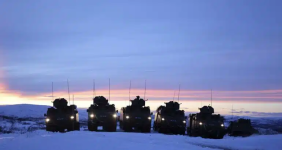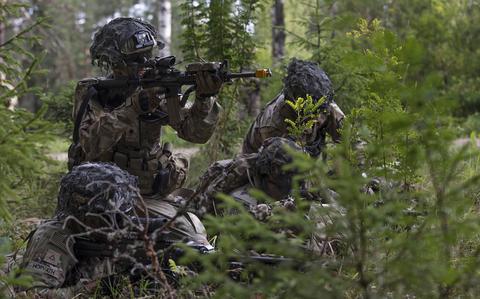FJAG
Army.ca Legend
- Reaction score
- 16,488
- Points
- 1,160
You don't need to double the batteries to make up for small loads of on-board ammo. You just need a good limber vehicle system with a rapid under-armour reloader capability.Make it two batteries. FJAG doesn't think there are enough rounds on board one gun. So buy him two and convert one M777 battery. You will still save manpower because you only need a driver and a gunner. The other 6 numbers in the gun dets can go to the MRTs and Ammo numbers and can be shared.
44 Leo 2s and 12 Archers might make a dent.
Also, having been the BK of an M109 flyover battery I see the practicality of prepositioned equipment. It makes the whole logistics issue a lot easier.
When it comes to a commitment to Europe my preference is heavy mech. That leads to the conclusion that you need prepositioned equipment and war stocks of ammo and other supplies.
When it comes to manning that equipment my first choice is posted tours in theatre with a solid evacuation plan. That has some issues of its own so my second choice is a posted core with a flyover round-out force coming for several exercises per year. I think frequent exercises matter not only for the exercise once there and deterrence, but to test and exercise the whole flyover cycle. My very last choice is 6 month rotos. IMHO that's a way to kill an army before the first shot is fired. Families matter. 6 month tours, especially repetitive ones over long periods of time create unnecessary hardships. I think planning on 6 month rotos to span a decade or more commitment is callous.
I'll go one step further. Having a 2,200 person in-country means the better part of a brigade eaten up every six month roto. They'll be hard pressed to do two rotos per year out of a single brigade even with 15-20% reserve participation. Speaking of reserves, 15-20% means about 400 folks on each roto are reservist. Take into account the need for predeployment training and you could have roughly 800 reservists on full-time service at any given time. That's the financial equivalent of adding 800 PYs to the army. That creates a cash burden somewhere on the system. Regardless of where its coming from that's around $58,000,000 or more bucks (based on corporal's pay (Class C $6,000 x 12 x 800) each year.
For that much money maybe you could keep all the tanks humming.




